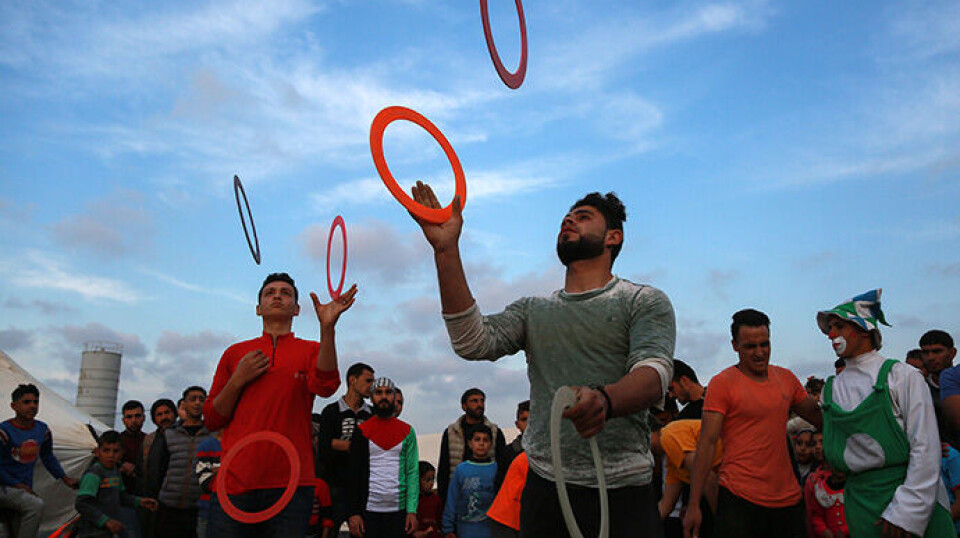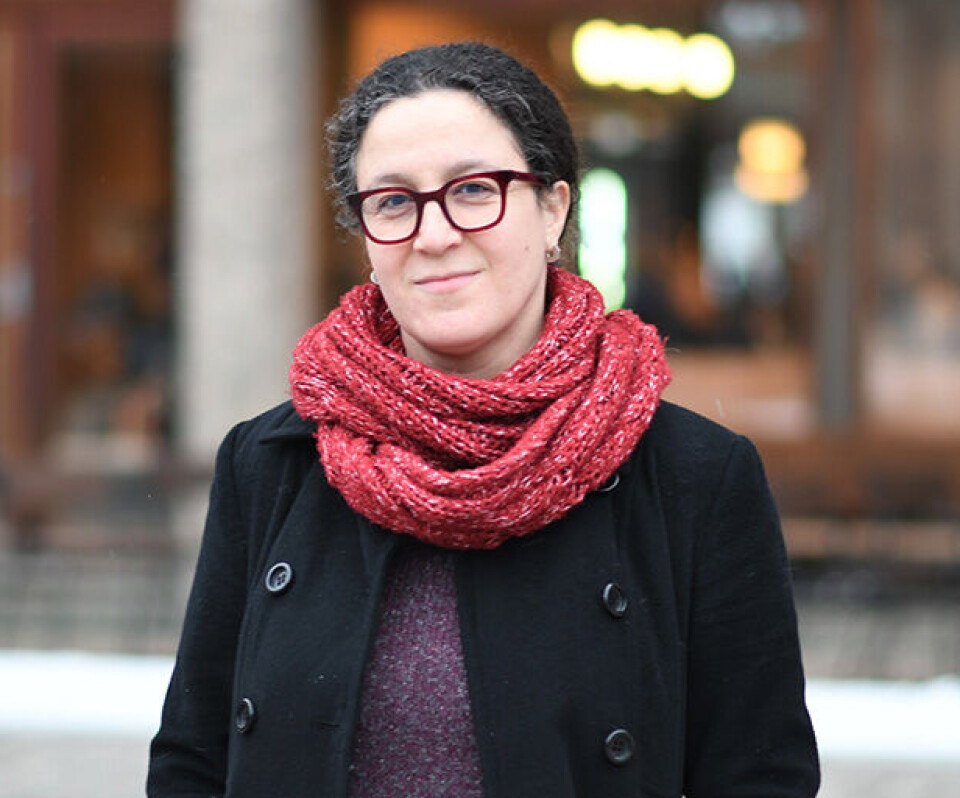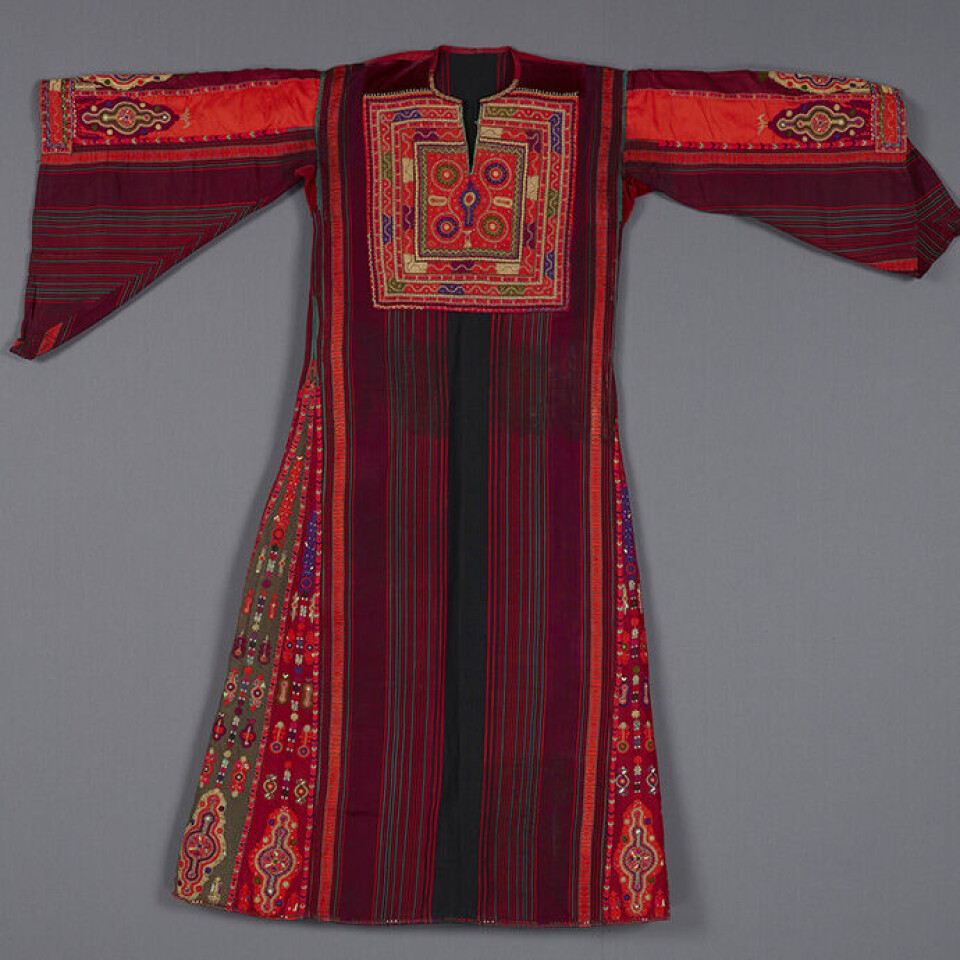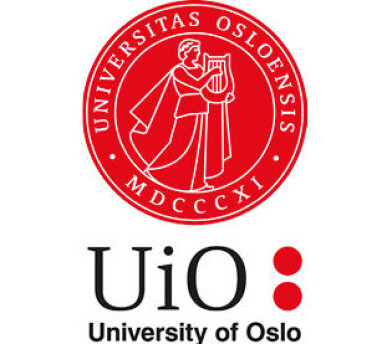THIS CONTENT IS BROUGHT TO YOU BY University of Oslo - read more
“Hope is an important part of Palestinian identity,” says researcher
How do you build identity and culture without a state? Palestinians turn to embroidery, poetry, and music, as well as the thought of one day being able to return home, according to historian Toufoul Abou-Hodeib.

In late January, news coverage featured thousands of Palestinians exploring the ruins in northern Gaza, looking for remnants of their homes.
This situation has brought the topic of return back into focus.

Professor of History Toufoul Abou-Hodeib is deeply engaged in the topic. She was unsure if it was the appropriate time to write about this subject when she received a request from the Middle East Journal of Culture and Communication.
Abou-Hodeib is half Palestinian, and they wanted her to write about how the conflict affected her both academically and personally.
Was it too daring to convey hope?
“I watched videos where Palestinians themselves conveyed the conflict. Understandably, many of these captured horrific scenes of war, but amidst all this, there were also numerous moments of hope,” says Abou-Hodeib.
The thought of returning home
What particularly struck the historian was how strong the belief in returning home remained. She thought that if Palestinians could convey hope amidst such dire circumstances, then surely she, living in peaceful Norway, could find a way to do so as well.
“In their defiance against being reduced to mere numbers, victims, and refugees, they compel those of us who observe from afar to rethink the narrative of being Palestinian,” she says.
Abou-Hodeib emphasises that Palestinians should not only be portrayed as a people things happen to, but as individuals who actively shape their own destiny.
As a Palestinian woman told the Norwegian public broadcaster NRK on January 27th: “We will rebuild our homes, even if it's with mud and sand.”
Displacement shapes the lives of Palestinians
In her article, Abou-Hodeib reflects on her family’s experiences on her father’s side:
'Nonetheless, one aspect, dispossession, has shaped my life as it has the lives of millions of Palestinians... It twice set my father’s family on an unknown path, first in 1948 and then in 1967....'
Her grandfather was active in a rebellion against Britain between 1936 and 1939. Palestine was under the British Empire from the end of World War I until 1948. As early as 1904, the Zionist movement had decided that Palestine would become the new home for Jewish people. Britain promised to support them.
“Zionists claimed that Palestine was a land without people, where the Jews, a people without land, could settle. In reality, there was a rich culture in place, with agriculture in the countryside, newspapers in cities, and political rights under an Ottoman constitution,” says Abou-Hodeib.
She notes that the outdated idea that Palestinians have no roots or political rights still persists today, given that Trump believes Palestinians can simply settle in Egypt and Jordan.
Research has focused on catastrophic years
Research and attention on Palestine have primarily focused on catastrophic years like 1948 – when 750,000 Palestinians were displaced following the creation of the State of Israel – the Six-Day War, the occupation of the West Bank and Gaza Strip in 1967, and the current conflict.
However, Abou-Hodeib is interested in everything that happens in between these years and the non-violent Palestinian resistance.
During the Great March of Return in 2018 and 2019, civil society in Gaza organised peaceful weekly demonstrations over 20 months to end the blockade. They demanded that Palestinians who became refugees after Israel's establishment be allowed to return.
Writing a book about Palestinian cultural heritage
Abou-Hodeib is currently working on a book that explores how Palestinian cultural heritage has been preserved and its role in non-violent resistance efforts.
“We may take it for granted that Palestinian dance, poetry, and embroidery are part of Palestinian culture, but with war and so many Palestinians in exile, it could have disappeared as well,” she says.
She observes how Palestinians who remained in Israel managed to come together after 1948 through poetry, dance, and music, despite the restrictions they were subjected to.
They used culture for political mobilisation and managed to maintain a Palestinian identity and their Arabic language.
After the Six-Day War in 1967 and the occupation of the West Bank and Gaza, more than a thousand Israeli military orders were issued. These include Military Order 101, which remains in effect today. This order prohibits Palestinians from raising flags, holding political meetings, or expressing political identity.
“Palestinians have used culture creatively to express themselves politically. For instance, when flags were confiscated during the First Intifada, women demonstrated in dresses that had the flag embroidered onto them,” the historian says.
Embroidery and resistance
Embroidery has held a particularly strong position in Palestinian culture. It has been part of the life journey of young women, who learned to embroider dresses for their marriage chest.
“Many Palestinians who fled in 1948 took these very dresses with them because they were such an important part of their identity, and they were also easy to carry when fleeing. Today, there are two such dresses at the Museum of Cultural History in Oslo,” Abou-Hodeib explains.
She flips through a book on cultural heritage, published in 1977 by the Ethnographic Department of the Israel Museum. Palestinian embroideries are featured, but the words Palestinian or Palestinians are not used even once.
This is an example of how Israel has attempted to suppress Palestinian identity and history.

Festivals preserved the culture
Many key figures in the Palestinian non-violent resistance movement have received little attention. Toufoul Abou-Hodeib aims to correct this in her upcoming book.
One such figure is Samiha Khalil, who built one of the largest welfare organisations in the West Bank, Inaash al-Usra.
“After the occupation in 1967, it became important to employ women. Through Khalil's organisation, many women learned to embroider, thus combining embroidery with employment,” she says.
Khalil also established a research department within the organisation. This department organised cultural heritage festivals in the 1970s, showcasing traditional music, dance, and costumes.
These festivals created a public space to express Palestinian identity and exercise resistance under Israeli restrictions.
Khalil was also a prominent figure in Palestinian politics. In 1996, she was the only candidate to challenge Arafat in the presidential election for the Palestinian Authority, receiving around 10 per cent of the votes.
Starting over – again and again
Abou-Hodeib believes that it is vital for the image of Palestinians to be nuanced, both for their present and future. Palestinians can also serve as a symbol of resilience.
“Between the two extremes of viewing Palestinians as victims or as violent, there are countless resourceful individuals who have endured occupation and displacement. Palestinians have become adept at starting anew time and time again,” she says.
As she writes in her article:
'Despite all its power and the billions of dollars feeding it, the astonishing machinery of death and destruction fails to suppress what it aspires most to suppress: hope.'
Reference:
Abou-Hodeib, T. Gaza and the Chronology of Perpetual Return, Middle East Journal of Culture and Communication, 2024. DOI: 10.1163/18739865-01703003

This content is paid for and presented by the University of Oslo
This content is created by the University of Oslo's communication staff, who use this platform to communicate science and share results from research with the public. The University of Oslo is one of more than 80 owners of ScienceNorway.no. Read more here.
More content from the University of Oslo:
-
Putin’s dream of the perfect family
-
How international standards are transforming the world
-
A researcher has listened to 480 versions of Hitler's favourite music. This is what he found
-
Researcher: "AI weakens our judgement"
-
New, worrying trend among incels, according to researcher
-
Ship’s logs have shaped our understanding of the sea




































